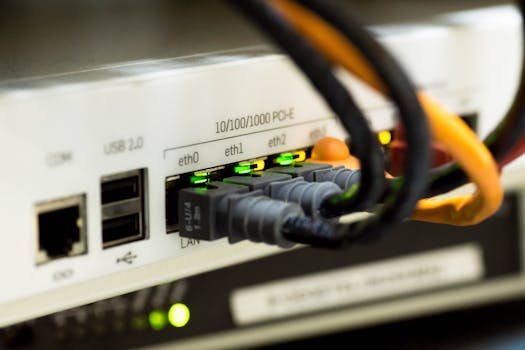Wi-Fi 6 vs Wi-Fi 6E: Which Should You Upgrade To?
9/20/2025 · Networking · 7 min

TL;DR
- Wi-Fi 6 brings big improvements over older Wi-Fi: higher throughput, better performance in crowded networks, lower latency, and improved battery life for devices.
- Wi-Fi 6E adds access to the 6 GHz band, offering wider channels, less interference, and higher sustained speeds where 6 GHz is allowed.
- If your household has many devices or you live in an apartment building, Wi-Fi 6 gives an immediate boost. Wi-Fi 6E is worth it if you want extra headroom for high-bandwidth tasks and live in a region that allows 6 GHz.
- Best upgrade picks by use case:
- Dense apartments or many smart devices: Wi-Fi 6 router with good QoS and mesh nodes.
- High-bandwidth home office, raw throughput, or future-proofing where 6 GHz is available: Wi-Fi 6E router or mesh.
What changed from previous generations
- Both Wi-Fi 6 and 6E use OFDMA and MU-MIMO improvements to serve multiple devices more efficiently.
- Target Wake Time helps battery life for IoT and mobile devices.
- 6E simply adds the 6 GHz band to the Wi-Fi 6 feature set, unlocking more contiguous channels and wider channel widths.
Spectrum and channels
- 2.4 GHz: good range and penetration, but crowded and limited bandwidth.
- 5 GHz: larger channels and less interference than 2.4 GHz, commonly used today for high-speed devices.
- 6 GHz (Wi-Fi 6E): many additional channels and support for 80/160 MHz wide channels without contention from legacy devices. This translates to more real-world headroom for throughput and lower latency.
- Note: 6 GHz availability depends on local regulators; not every country allows full 6 GHz use. Check local rules before buying solely for 6E.
Real-world speed and latency
- Wi-Fi 6 improves multi-device performance. In busy networks you will see higher aggregate throughput and less latency spikes.
- Wi-Fi 6E can deliver higher peak and sustained speeds on a client that supports 6 GHz, especially when using 160 MHz channels.
- Expect actual speeds to be lower than theoretical maxima due to distance, walls, interference, and client limitations.
Device support and compatibility
- To benefit from Wi-Fi 6 features, both router and client must support Wi-Fi 6. Backward compatibility means older devices still connect, but they do not gain the newer efficiencies.
- Wi-Fi 6E requires a 6E-capable client to use the 6 GHz band. Many recent flagship phones, some laptops, and high-end adapters support 6E, but large numbers of devices still do not.
Range and environment considerations
- 6 GHz frequencies have slightly shorter range and worse wall penetration than 5 GHz. For large homes, you may need additional access points or mesh nodes to get 6E coverage in every room.
- If your priority is maximum coverage through walls, 2.4 GHz still helps. For contiguous in-room bandwidth, 6E shines.
Congestion and interference
- In dense neighborhoods, 2.4 GHz and 5 GHz can be congested. Wi-Fi 6E is valuable here because it often means practically congestion-free channels.
- However, if most of your devices are older, 6E spectrum may remain underused until you upgrade clients.
Security and features
- WPA3 is increasingly standard on Wi-Fi 6 and 6E gear, offering stronger protections. Turn it on and use a strong passphrase.
- Look for routers with good firmware update policies to maintain security over time.
Mesh and multi-AP setups
- If you need whole-home coverage, Wi-Fi 6 mesh systems are a strong choice. Mesh with backhaul options preserves performance across nodes.
- Wi-Fi 6E mesh nodes are emerging, but a 6E node is only helpful if both the node and client use 6 GHz, and you have the regulatory allowance.
Backhaul and wired considerations
- For best results, use wired Ethernet backhaul between nodes or a dedicated 5 GHz/6 GHz wireless backhaul on mesh systems.
- The router's WAN/LAN ports should match your internet speed. A gigabit WAN port is minimal for modern plans; multi-gig ports help if your ISP or internal transfers exceed 1 Gbps.
Who should upgrade now
- Upgrade to Wi-Fi 6 if: you have many devices, notice slowdowns in busy times, want better consistency for video calls and gaming, or your router is several generations old.
- Consider Wi-Fi 6E if: you live where 6 GHz is allowed, you have 6E-capable clients or plan to in the near future, and you want maximum bandwidth with minimal local interference.
When to wait
- If your devices are mostly older Wi-Fi 5 or 4 models, you might not see immediate benefits from 6E. A solid Wi-Fi 6 router or mesh system often delivers the best practical improvement now.
Buying checklist
- Check local 6 GHz regulations before prioritizing 6E.
- Ensure client devices support Wi-Fi 6 or 6E to benefit.
- Prefer routers with WPA3, regular firmware updates, and good vendor support.
- For whole-home coverage, plan for mesh with Ethernet backhaul where possible.
- Look for multi-gig ports if you have a very fast internet plan or need high internal transfer rates.
Bottom line
- Wi-Fi 6 is the most cost effective and immediately impactful upgrade for most homes: better performance in crowded environments, lower latency, and more efficient device handling.
- Wi-Fi 6E adds valuable spectrum and lower interference, but its advantage depends on local 6 GHz rules and having 6E-capable clients. If you want the fastest in-room speeds and future headroom and you live in a supported region, Wi-Fi 6E is worth choosing.
Found this helpful? Check our curated picks on the home page.